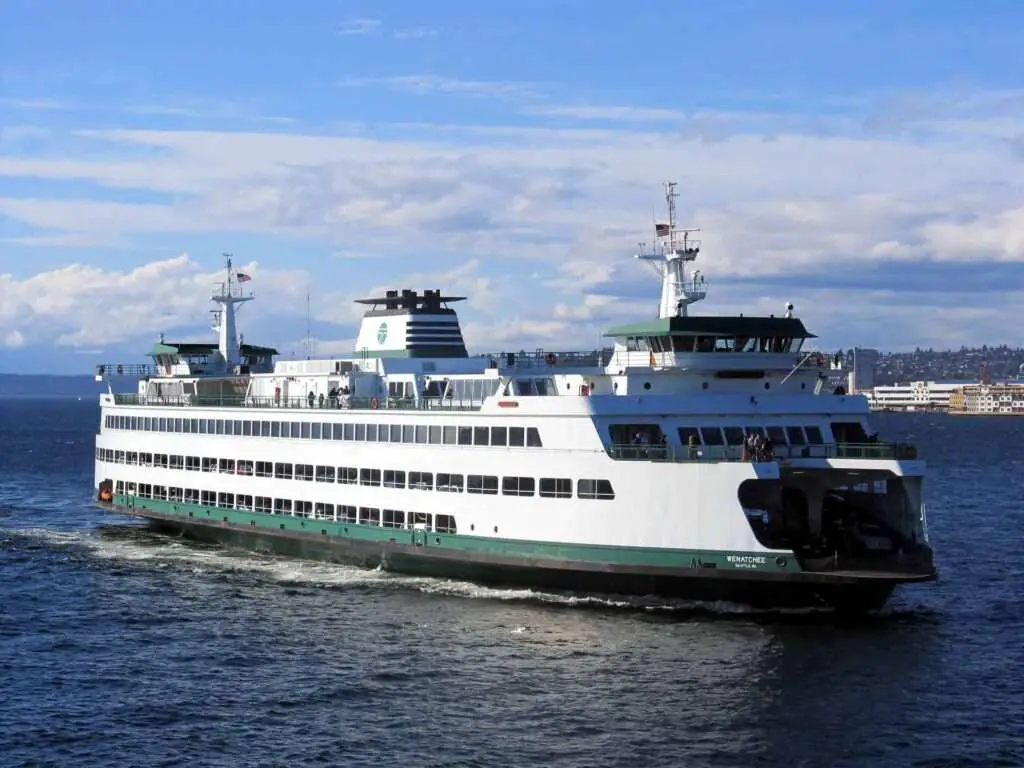
What are the different types of RoRo ships?
Ro-Ro, or Roll-On/Roll-Off, ships are specifically designed vessels that facilitate the easy movement of cargo, vehicles, and passengers.
These ships are equipped with ramps that allow for vehicles to be driven onto the vessel, making loading and unloading a seamless process.
There are two main types of Ro-Ro ships: Ro-Ro passenger ships and Ro-Ro cargo ships.
What is the other name for RoRo?
Ro-Ro, or Roll-on/Roll-off, is the commonly used term for a type of vessel that is specifically designed to carry vehicles and cargo that can be driven on and off the ship.
In Europe, Ro-Ro ships are often referred to as “ferries” due to their common use for transporting passengers and vehicles across short distances, such as between neighboring countries or islands.
In other parts of the world, such as North America, Ro-Ro ships are often called “conventional ships” or “vehicle carriers” to differentiate them from other types of vessels.
What are the major advantages of RoRo ships?
The biggest advantage of RoRo ships is that they are extremely efficient in loading and unloading cargo or passengers.
RoRo ships have ramps or doors that can be easily lowered to allow the cargo or passengers to be driven onto or off the ship. This means that loading and unloading are much faster than with traditional shipping methods that require individual items to be loaded onto the ship.
What is a RoRo passenger ship?
Ro-Ro passenger ships, short for roll-on/roll-off passenger ships, are a type of vessel designed to transport both passengers and vehicles.
These ships are specifically built with ramps or doors on their bow or stern, allowing vehicles to easily drive onto the ship and be securely stowed for the duration of the journey.
Ro-Ro passenger ships offer a convenient mode of transportation for individuals who want to bring their vehicles along for the ride.
Whether it’s cars, motorcycles, or even bicycles, these ships provide a hassle-free way to travel with your own vehicle, eliminating the need for renting or relying on public transportation at the destination.
Examples of RoRo passenger ships include ferries, cruise ships, etc.
Why are all RoRo passenger ships divided into vertical zones?
Each deck on a RoRo passenger ship is designed to carry a specific type of vehicle. For instance, the lower decks are designated for heavier vehicles like trucks and buses, while the upper decks are meant for lighter vehicles like cars and motorcycles.
This separation is crucial because it ensures the safety of the passengers and their vehicles.
The separation of the different types of vehicles also helps with the loading and unloading process.
Passengers are only allowed to access their designated zone, making it easier for them to retrieve their vehicles without having to navigate through a maze of cars, buses, and trucks.
Here is a good video to show how passengers and cars get on a ferry
What is RoRo cargo ships?
RoRo cargo ships, also known as roll-on/roll-off cargo ships, are vessels designed for the transportation of vehicles and other heavy goods.
These ships have a wide ramp at the stern or the side that allows vehicles to drive on and off the ship quickly and efficiently.
RoRo cargo ships can carry a variety of cargo, including trucks, buses, trailers, and heavy construction equipment.
RoRo passenger ship vs RoRo cargo ship
Purpose of the ships
Ro-Ro passenger ships are specifically designed to accommodate both passengers and their vehicles. They have spacious cabins, restaurants, entertainment areas, and other amenities to ensure a comfortable journey for travelers.
Ro-Ro cargo ships focus solely on transporting vehicles and goods, with no provisions for passenger accommodation.
Ship structure
Ro-Ro passenger ships are divided into vertical zones to separate passengers and their vehicles. This ensures safety and convenience during boarding and disembarkation.
Ro-Ro cargo ships have a more open layout, with cargo vehicles and goods being loaded and secured in designated areas.
Also Read: RORO Ship: Everything You Need To Know (Explained)
What is the difference between LoLo and RoRo?
LoLo stands for “lift-on/lift-off” and refers to ships that require cranes to load and unload cargo. RoRo, on the other hand, stands for “roll-on/roll-off” and refers to ships that allow cargo to be driven on and off the vessel.
Examples of LoLo vessel is container ships. The containers need crane to load and unload.
Examples of RoRo vessel is car carrier, truck carrier, etc.
What is the difference between RoRo and PCTC?
PCTC, or pure car and truck carrier, is a specific type of RoRo ship that is designed to transport only vehicles.
RoRo ships are typically larger than PCTC ships and are primarily designed to transport a wide variety of cargo, including not only vehicles but also containers, trailers, and other heavy equipment.
In contrast, PCTC ships are smaller and more specialized, primarily designed to transport cars, trucks, and other wheeled vehicles.
RoRo ships typically have larger ramps and more storage space, allowing for a greater variety of cargo to be loaded and unloaded quickly and efficiently.
PCTC ships, on the other hand, often have multi-level decks and specially designed interior systems to safely and securely transport vehicles without the risk of damage or shifting during transit.
Here is a good video to show how millions of cars get loaded on a RoRo ship with 14 decks
